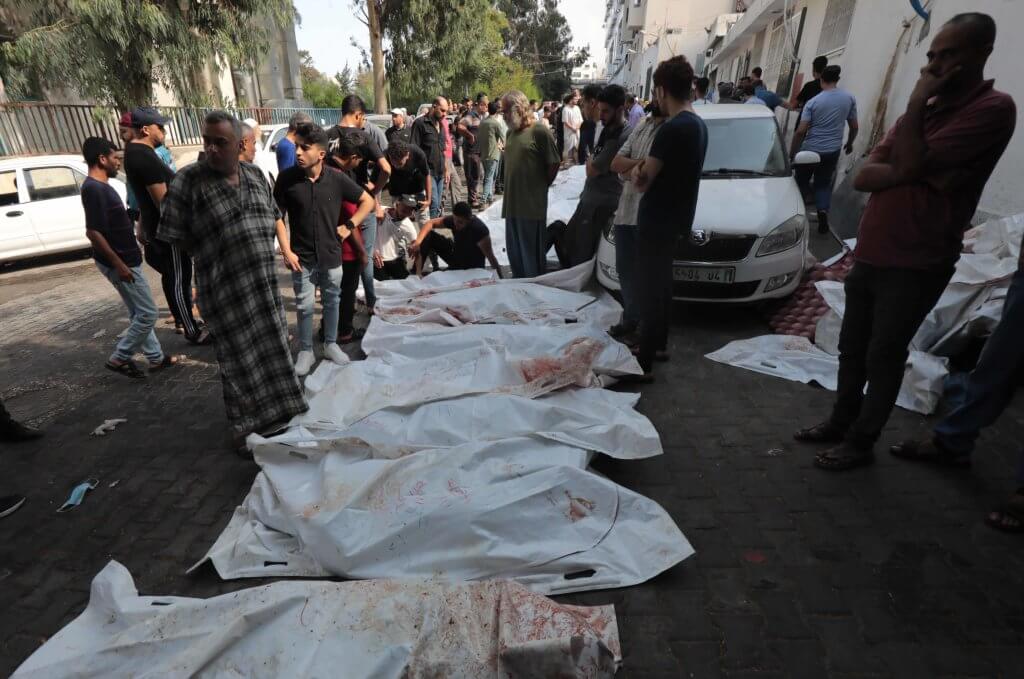
On Saturday, May 11, the Jerusalem Post under editor Yuval Barnea came out with a sensational headline:
“UN seemingly halves estimate of Gazan women, children killed.”The article featured two graphics from the UN, one from May 6 and one from May 8, both clearly noting that approximately 35,000 Palestinians have been killed in Gaza since October 7, but the second specified that bodies that have been able to be identified were under 25,000. Out of these, the breakdown included 52% women and children, as well as 8% elderly. Earlier on, the UN noted that about 2/3 of fatalities are women and children. Now, the game of genocide denial has begun. The supposedly benign Jerusalem Post article quickly moved on to “questions of data accuracy,” citing Israel apologia outlets such as AIPAC’s thinktank the Washington Institute for Near East Policy (WINEP), and its January report “that showed major discrepancies in the fatality reports” which suggested “manipulation.” The article also cited Abraham Weiner from Tablet Magazine claiming “fake numbers.” The story was then picked up by others. The Foundation for Defense of Democracies picked up the story the same day, claiming now with certainty: “UN Halves Its Estimate of Women and Children Killed in Gaza.” Even Haaretz’s political correspondent Noga Tarnopolsky tweeted the graphics the next day (and still hasn’t removed it):
“Proof of how problematic it is that Hamas is the only body issuing numbers of the dead in Gaza. @ochaopt changed its figures of estimated dead in Gaza from 34,844 to 24,686, dropping the estimated number of women & children killed from 69% to 52%.”Naks Bilal countered her:
“The UN hasn’t changed its figures. Stop spreading disinformation. The differences are down to identification (not the bodies themselves).”Owen Jones too:
“You are spreading disinformation in the service of atrocity denial and should retract and apologise.”But meanwhile, the spin spreads. Next day (Sunday), the Jewish Chronicle:
“UN appears to halve Gaza casualty count for women and children – Doubts have been raised over the veracity of the Palestinian death count since October 7”Times of Israel, Tuesday, May 14:
“UN cuts by more than half the number of women, children ‘identified’ as killed in Gaza.”At that point, the UN managed to issue a response to the non-story, which is even cited by CNN:
“UN says total number of deaths in Gaza remains unchanged after controversy over revised data.”Reuters was on it, too, confirming the 35,000 number, but noting that “Israel last week questioned why the figures for the deaths of women and children has suddenly halved.”
Public-facing doubt, accepting numbers behind the scenes
The game of casting doubt on the death toll has been an early feature of this genocide, with Joe Biden kicking it off on October 27 when he said that he had “no confidence in the number that the Palestinians are using” — without saying why. The UN Office for the Coordination of Humanitarian Affairs (OCHA) had to issue a statement in response: “We continue to include their data in our reporting and it is clearly sourced.” But the damage was done, and the intentionally dehumanizing mantra of the “Hamas-run health ministry” was ubiquitous in Western media discourse. And yet, senior Israel officials were using the Gaza Health Ministry’s death numbers internally for months after both Israel and the U.S. claimed those figures should not be trusted — as reported by Vice in January:“According to a story in Mekomit by Yuval Avraham, who last year broke news about the Israeli military’s use of AI for targeting purposes, the numbers were accepted for inclusion in briefings to senior Israeli officials after intelligence services conducted operations and analysis to monitor the health ministry’s information collection methods and its internal communications and determined the statistics were credible. An Israeli intelligence official confirmed the Israeli government’s use of the Gaza ministry numbers to VICE News, while two officials from European intelligence services said they were widely used in official briefings internationally.”The data collection methods and numbers were deemed credible internally:
“The secret services looked at the health ministry’s collection methods and determined the numbers were generally credible, so instead of collecting their own information they decided to use the [Hamas] numbers.”
